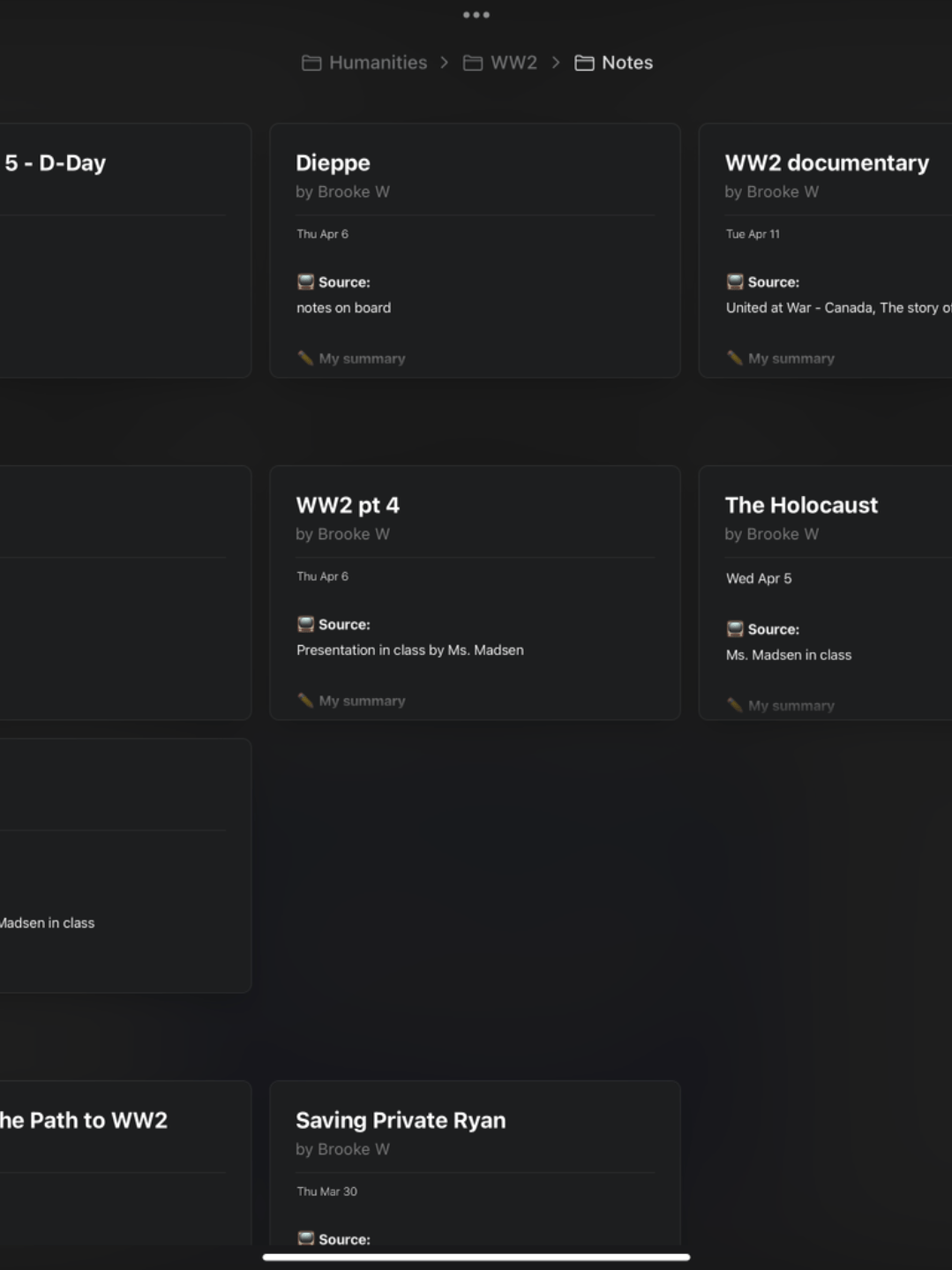Hello all and welcome back. This post will be regarding my most recent humanities project, Save Juno beach! In this project we got to learn about World War II and Canada’s involvement and significance in said war. I have been fascinated by WWII for many years now so I was super excited to do a WWII project! So without further ado, lets hop into the project.
Driving Question
Why is it so important to preserve the Juno Beach Centre?
The Project; Keystones 1&2
We kicked off this project by learning all about WWII. Who was fighting? What was going on post WWI? Great Depression era? What was Canada doing? And how do all of these events and a grave economic collapse lead to WWII? Good thing I took extensive notes on all these topics in class because now I have a bank of knowledge that I can refer to anytime. Here are examples of some of my notes;
In keystone 1, we used our understanding of the criteria for determining historical significance to ascertain the 3 most important reasons why WWII was significant either for Canada as a nation or Canada’s impact elsewhere. Luckily my extensive note taking was coming in handy because I immediately knew what I believed to be some very significant events. I ended up choosing my 3 to be, in no particular order, the Battle of the Atlantic, Battle of Dieppe, and Elsie Macgill’s manufacturing of Hurricane planes for the Allied airforces. In case you were curious about these events or why they are significant, here is my writing for keystone 1 – Historical Significance of WWII
Keystone 2 reintroduced us to elements of rhetoric that would help us write our final composition for this project. We had previously learned about ethos, pathos, and logos in a project from grade 8 so it was definitely time for a refresher to step up our game. Part 1 of keystone 2 had us analyzing a text to look for its usage of rhetoric to get the message across. I started off my analysis by annotating the text as I read it to try to catch any usage of ethos, pathos, or logos. This ended up making it much easier for me to write about when writing my analysis to hand in. The question to be answered for keystone 2 was “What is the author saying and what are the choices they made to effectively communicate that message?” and I saw many areas appealing to different rhetoric schemes but found the main usage to be that of pathos, appealing to emotion.
Writing Process
To solidify our message for our final writing composition, we needed to develop a thesis. I wanted to recognize the importance of the Juno Beach Centre representing Canada globally and bringing people together. The final thesis that I came up with was;
“It is important to have Canada represented on the world stage when it comes to WWII memorials like the Juno Beach Centre because it is preserving the memory of Canadian soldiers, promoting international understanding and cooperation, and calling attention to the shared history and values that unite Canada and its allies.”
And before we jumped straight into drafting, we also did some brainstorming to make the writing easier because we would already have laid out what we wanted to talk about or make points of.
After that, we finally started writing drafts of our composition. I ended up making 4 drafts in total before landing my final copy. I utilized a plethora of feedback from my peers and teacher to mold my writing and fix any mistakes I made. I found it super helpful to have multiple sources of feedback because sometimes certain people would catch mistakes that others didn’t or have a new idea for wording something that I wouldn’t have thought of.
Overall I am really proud of my final work and my performance through this project. So, why is it so important to preserve the Juno Beach Centre? Here is my answer in my final composition, “Commemorating Canada”. LINKKKKKK
As Always, Brooke





